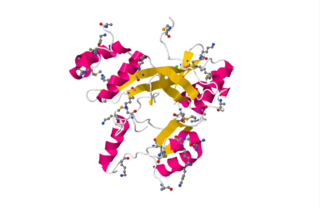| ATG9B | |||||||||||||||||||||||||||||||||||||||||||||||||||
|---|---|---|---|---|---|---|---|---|---|---|---|---|---|---|---|---|---|---|---|---|---|---|---|---|---|---|---|---|---|---|---|---|---|---|---|---|---|---|---|---|---|---|---|---|---|---|---|---|---|---|---|
| Identifiers | |||||||||||||||||||||||||||||||||||||||||||||||||||
| Aliases | ATG9B , APG9L2, NOS3AS, SONE, autophagy related 9B | ||||||||||||||||||||||||||||||||||||||||||||||||||
| External IDs | OMIM: 612205 MGI: 2685420 HomoloGene: 72638 GeneCards: ATG9B | ||||||||||||||||||||||||||||||||||||||||||||||||||
| |||||||||||||||||||||||||||||||||||||||||||||||||||
| |||||||||||||||||||||||||||||||||||||||||||||||||||
| |||||||||||||||||||||||||||||||||||||||||||||||||||
| |||||||||||||||||||||||||||||||||||||||||||||||||||
| Wikidata | |||||||||||||||||||||||||||||||||||||||||||||||||||
| |||||||||||||||||||||||||||||||||||||||||||||||||||
Autophagy related 9B is a protein that in humans is encoded by the ATG9B gene. [5]
| ATG9B | |||||||||||||||||||||||||||||||||||||||||||||||||||
|---|---|---|---|---|---|---|---|---|---|---|---|---|---|---|---|---|---|---|---|---|---|---|---|---|---|---|---|---|---|---|---|---|---|---|---|---|---|---|---|---|---|---|---|---|---|---|---|---|---|---|---|
| Identifiers | |||||||||||||||||||||||||||||||||||||||||||||||||||
| Aliases | ATG9B , APG9L2, NOS3AS, SONE, autophagy related 9B | ||||||||||||||||||||||||||||||||||||||||||||||||||
| External IDs | OMIM: 612205 MGI: 2685420 HomoloGene: 72638 GeneCards: ATG9B | ||||||||||||||||||||||||||||||||||||||||||||||||||
| |||||||||||||||||||||||||||||||||||||||||||||||||||
| |||||||||||||||||||||||||||||||||||||||||||||||||||
| |||||||||||||||||||||||||||||||||||||||||||||||||||
| |||||||||||||||||||||||||||||||||||||||||||||||||||
| Wikidata | |||||||||||||||||||||||||||||||||||||||||||||||||||
| |||||||||||||||||||||||||||||||||||||||||||||||||||
Autophagy related 9B is a protein that in humans is encoded by the ATG9B gene. [5]
This gene functions in the regulation of autophagy, a lysosomal degradation pathway. This gene also functions as an antisense transcript in the post-transcriptional regulation of the endothelial nitric oxide synthase 3 gene, which has 3' overlap with this gene on the opposite strand. Mutations in this gene and disruption of the autophagy process have been associated with multiple cancers. Alternative splicing results in multiple transcript variants.

Complement component 6 is a protein that in humans is encoded by the C6 gene.

Mannan-binding lectin serine protease 2 also known as mannose-binding protein-associated serine protease 2 (MASP-2) is an enzyme that in humans is encoded by the MASP2 gene.

Chemokine ligand 8 (CCL8), also known as monocyte chemoattractant protein 2 (MCP2), is a protein that in humans is encoded by the CCL8 gene.

Prostaglandin-I synthase also known as prostaglandin I2 (prostacyclin) synthase (PTGIS) or CYP8A1 is an enzyme involved in prostanoid biosynthesis that in humans is encoded by the PTGIS gene. This enzyme belongs to the family of cytochrome P450 isomerases.

Neural cell adhesion molecule L1-like protein also known as close homolog of L1 (CHL1) is a protein that in humans is encoded by the CHL1 gene.

Dicarbonyl/L-xylulose reductase, also known as carbonyl reductase II, is an enzyme that in human is encoded by the DCXR gene located on chromosome 17.

The interleukin-1 receptor antagonist protein (IL-1RN) is a protein that in humans is encoded by the IL1RN gene.

Cytochrome P450 3A43 is a protein that in humans is encoded by the CYP3A43 gene.

AT-rich interactive domain-containing protein 4B is a protein that in humans is encoded by the ARID4B gene.

UDP-glucuronosyltransferase 2B17 is an enzyme that in humans is encoded by the UGT2B17 gene.

10-formyltetrahydrofolate dehydrogenase is an enzyme that in humans is encoded by the ALDH1L1 gene.

Zinc transporter ZIP10, also known as solute carrier family 39 member 10, is a protein that in humans is encoded by the SLC39A10 gene. ZIP10 belongs to a subfamily of proteins that show structural characteristics of zinc transporters, and have 14 members in the human genome: ZIP1, ZIP2, ZIP3, ZIP4, ZIP5, ZIP6, ZIP7, ZIP8, ZIP9, ZIP10, ZIP11, ZIP12, ZIP13 and ZIP14.

Glutathione peroxidase 6 (GPx-6) is an enzyme that in humans is encoded by the GPX6 gene.

LINE-1 type transposase domain containing 1, also known as L1TD1, is an RNA-binding protein that involved with self-renewal of undifferentiated human embryonic stem cells and cancer cell proliferation. L1TD1 has been reported to associate with the development of several cancers.

Transmembrane and coiled-coil domain 6, TMCO6, is a protein that in humans is encoded by the TMCO6 gene with aliases of PRO1580, HQ1580 or FLJ39769.1.
Eugenia E. “Jeanne” Calle (1952–2009) was an American cancer epidemiologist.

B-cell CLL/lymphoma 7 protein family member A is a protein that in humans is encoded by the BCL7A gene.

Pacer is a protein that in humans is encoded by the RUBCNL gene. Pacer has been shown to increase cellular autophagy through regulation of PI3KC3.

Pecanex homolog 3 is a protein that in humans is encoded by the PCNX3 gene.

Solute carrier family 30 member 10 is a protein that in humans is encoded by the SLC30A10 gene.
This article incorporates text from the United States National Library of Medicine, which is in the public domain.